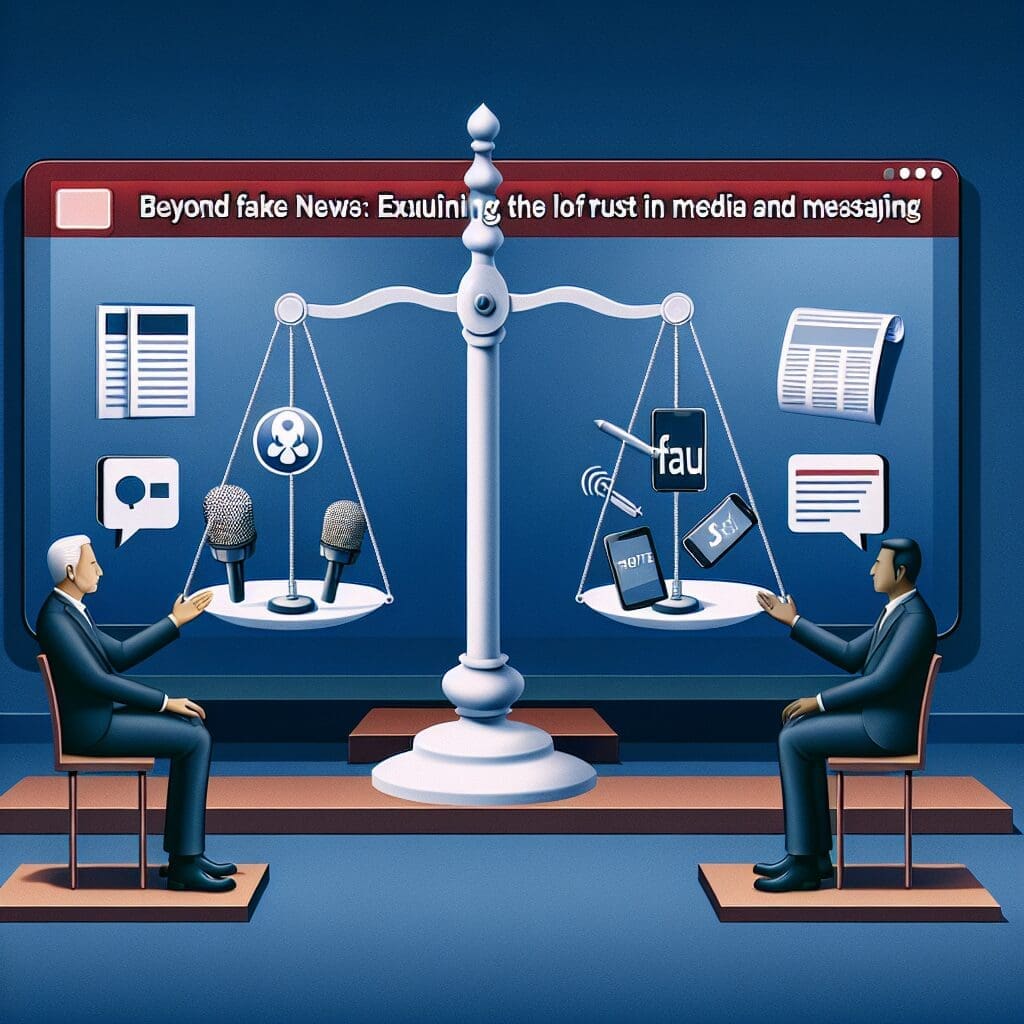Beyond Fake News: Examining the Role of Trust in Media and Messaging
In today’s fast-paced digital world, the challenge of discerning fact from fiction has become increasingly daunting. With the rise of social media, misinformation spreads faster than ever, making it imperative for voters and citizens to evaluate the reliability of the information they consume. In this landscape, trust in media and messaging is not just a luxury; it’s a necessity.
The Crisis of Trust
Recent studies have shown that public trust in media outlets is at an all-time low. According to a Pew Research Center survey, a significant number of Americans express skepticism toward traditional news organizations. This decline is often attributed to the proliferation of fake news, sensationalism, and the tendency for media to cater to specific ideological viewpoints. The erosion of trust undermines informed decision-making, particularly in electoral contexts where accurate information is crucial for voters.
As misinformation continues to blur the lines between reality and fabrication, it’s vital to cultivate a more discerning audience. Trust in media can be nurtured through transparency, fact-checking, and media literacy. However, voters also have a responsibility to seek out credible sources and to engage with diverse viewpoints.
Importance of Effective Messaging
In an election cycle, effective messaging is essential for candidates to connect with voters. Messages must resonate, inspire, and ultimately, motivate action. Yet, when trust is compromised, even the best-crafted messages can fall flat. Voters may dismiss genuine messages as politically charged rhetoric, making it vital for candidates to prioritize trust-building in their communication strategies.
Building Trust: How SnapSite Can Help
Here’s where tools like SnapSite come into play. SnapSite offers innovative solutions tailored for Political Campaigns, helping candidates establish credible online presences that foster trust. By creating user-friendly, professional, and informative websites, candidates can effectively convey their messages while prioritizing transparency and engagement.
-
Streamlined Communication: SnapSite enables candidates to craft direct messages to their constituents, ensuring transparency regarding their platforms and policies. This proactive approach helps alleviate voter concerns and builds trust over time.
-
Educational Resources: Beyond sheer promotional content, SnapSite’s political campaign websites can host resources that educate voters on key issues and positions. When voters feel informed, they are more likely to trust the messenger.
-
Fact-Checking Integration: Candidates can utilize SnapSite’s platform to share verified facts related to their Campaigns, countering the spread of misinformation. This can create a ripple effect where trust is reinforced through the transparency of facts.
-
Engaging Community Features: A key aspect of trust is community engagement. SnapSite can help Campaigns facilitate discussions and feedback mechanisms, allowing voters to participate in conversations and providing them with a sense of belonging and investment in the political process.
-
Targeting Key Voter Demographics: Effectively reaching constituents requires understanding and targeting specific demographics. SnapSite can aid candidates in developing tailored messaging that resonates with various voter groups, thus enhancing authenticity and trust.
Conclusion
As we navigate an era fraught with misinformation, the role of trust in media and messaging is more crucial than ever. Voters need to feel confident in the information they consume, and candidates must take proactive steps to earn that trust.
Those looking to enhance their campaign’s credibility can explore solutions like SnapSite. With powerful tools and resources, candidates can harness the potential of online platforms to create lasting trust with their electorate. By focusing on strategies around How to Win an Election, they can transform their messaging into a trusted beacon of information for voters.
Call to Action
In a complex media landscape, the choice is clear: prioritize trust, engage with voters authentically, and utilize tools like SnapSite to strengthen your campaign’s messaging. In doing so, candidates can not only win elections but also foster a more informed, engaged, and trusting electorate.
Media and Messaging




